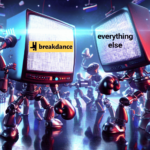Soon after the current OpenAI drama, a new model which is believed to be extraordinary at higher-degree considering and solving complicated math troubles has been speculated, and it is named Q*. It allegedly has a staff of researchers concerned that it may possibly pose a risk to humanity.
The Q* undertaking is stated to probably be employed in groundbreaking scientific analysis that may even surpass human intelligence. But what precisely is the Q* undertaking and what does it imply for the potential of AI?
Soon after Tons Of Speculation, Here is What We Discovered:
- Q* is an inner undertaking at OpenAI that some feel could be a breakthrough in direction of artificial common intelligence (AGI). It is targeted on effectively solving complicated mathematical troubles.
- The title “Q*” suggests it may possibly involve quantum computing in some way to harness the processing electrical power required for AGI, but other people consider the “Q” refers to Q-studying, a reinforcement studying algorithm.
- Some speculate that Q* is a modest model that has proven guarantee in standard math troubles, so OpenAI predicts that scaling it up could enable it to tackle very complicated troubles.
- Q* may possibly be a module that interfaces with GPT-four, assisting it purpose a lot more persistently by offloading complicated troubles onto Q*.
- Even though intriguing, particulars on Q* are really restricted and speculation is higher. There are numerous unknowns about the precise nature and abilities of Q*. Opinions vary broadly on how shut it brings OpenAI to AGI.
What Is The Q* Venture?
OpenAI researchers have produced a new AI technique named Q* (pronounced as Q-star) that displays an early capacity to resolve standard math troubles. Even though particulars continue to be scarce, some at OpenAI reportedly feel Q* represents progress in direction of artificial common intelligence (AGI) – AI that can match or surpass human intelligence across a broad assortment of duties.
Even so, an inner letter from concerned researchers raised questions about Q*’s abilities and no matter whether core scientific concerns all around AGI security had been resolved prior to its creation. This apparently contributed to leadership tensions, like the quick departure of CEO Sam Altman just before he was reinstated days later on.
In the course of an visual appeal at the APEC Summit, Altman produced vague references to a recent breakthrough that pushes scientific boundaries, now considered to indicate Q*. So what helps make this technique so promising? Mathematics is deemed a essential challenge for sophisticated AI. Present designs depend on statistical predictions, yielding inconsistent outputs. But mathematical reasoning calls for exact, logical solutions each and every time. Establishing individuals capabilities could unlock new AI likely and applications.
Even though Q* represents uncertain progress, its growth has sparked debate inside of OpenAI about the significance of balancing innovation and security when venturing into unknown territory in AI. Resolving these tensions will be crucial as researchers decide no matter whether Q* is really a stage towards AGI or just a mathematical curiosity. A lot perform will most probably be necessary just before its total abilities are unveiled.
What Is Q Understanding?
The Q* undertaking utilizes Q-studying which is a model-cost-free reinforcement studying algorithm that determines the greatest program of action for an agent primarily based on its existing conditions. The “Q” in Q-studying stands for good quality, which represents how successful an action is at earning potential rewards.
Algorithms are classified into two sorts: model-primarily based and model-cost-free. Model-primarily based algorithms use transition and reward functions to estimate the greatest approach, whereas model-cost-free algorithms understand from encounter with out making use of individuals functions.
In the worth-primarily based technique, the algorithm teaches a worth perform to understand which scenarios are a lot more worthwhile and what actions to get. In contrast, the policy-primarily based technique right trains the agent on which action to get in a offered scenario.
Off-policy algorithms assess and update a approach that is not the a single employed to get action. On the other hand, on-policy algorithms assess and boost the exact same approach employed to get action. To comprehend this a lot more, I want you to consider about an AI taking part in a game.
- Worth-Primarily based Technique: The AI learns a worth perform to assess the desirability of numerous game states. For illustration, it may possibly assign larger values to game states in which it is closer to winning.
- Policy-Primarily based Technique: Rather than focusing on a worth perform, the AI learns a policy for creating choices. It learns principles this kind of as “If my opponent does X, then I must do Y.”
- Off-Policy Algorithm: Soon after becoming skilled with a single approach, the AI evaluates and updates a distinct approach that it did not use throughout education. It may possibly reconsider its technique as a end result of the substitute approaches it appears into.
- On-Policy Algorithm: On the other hand, an on-policy algorithm would assess and boost the exact same approach it employed to make moves. It learns from its actions and helps make much better choices primarily based on the existing set of principles.
Worth-primarily based AI judges how great scenarios are. Policy-primarily based AI learns which actions to get. Off-policy studying utilizes unused encounter as well. On-policy studying only utilizes what truly took place.
AI Vs AGI: What is The Distinction?
Even though some regard Artificial Common Intelligence (AGI) as a subset of AI, there is an crucial distinction in between them.
AI Is Primarily based on Human Cognition
AI is created to complete cognitive duties that mimic human abilities, this kind of as predictive advertising and marketing and complicated calculations. These duties can be carried out by people, but AI accelerates and streamlines them by way of machine studying, in the end conserving human cognitive assets. AI is meant to boost people’s lives by facilitating duties and choices by way of preprogrammed functionalities, creating it inherently consumer-pleasant.
Common AI Is Primarily based on Human Intellectual Potential
Common AI, also identified as powerful or stringent AI, aims to give machines with intelligence comparable to people. Not like classic AI, which helps make pre-programmed choices primarily based on empirical information, common AI aims to push the envelope, envisioning machines capable of human-degree cognitive duties. This is a Whole lot tougher to achieve however.
What Is The Potential Of AGI?
Authorities are divided on the timeline for obtaining Artificial Common Intelligence (AGI). Some nicely-identified authorities in the area have produced the following predictions:
- Louis Rosenberg of Unanimous AI predicts that AGI will be offered by 2030.
- Ray Kurzweil, Google’s director of engineering, believes that AI will surpass human intelligence by 2045.
- Jürgen Schmidhuber, co-founder of NNAISENSE, believes that AGI will be offered by 2050.
The potential of AGI is uncertain, and ongoing analysis is becoming carried out to pursue this purpose. Some researchers really don’t even feel that AGI will ever be attained. Goertzel, an AI researcher, emphasizes the trouble in objectively measuring progress, citing the numerous paths to AGI with distinct subsystems.
A systematic concept is lacking, and AGI analysis is described as a “patchwork of overlapping ideas, frameworks, and hypotheses” that are often synergistic and contradictory. Sara Hooker of analysis lab Cohere for AI stated in an interview that the potential of AGI is a philosophical query. Artificial common intelligence is a theoretical notion, and AI researchers disagree on when it will turn out to be a actuality. Even though some feel AGI is not possible, other people feel it could be achieved inside of a couple of decades.
Ought to We Be Concerned About AGI?
The thought of surpassing human intelligence rightly triggers apprehension about relinquishing handle. And even though OpenAI claims rewards outweigh hazards, current leadership tensions reveal fears even inside of the firm that core security concerns are becoming dismissed in favor of fast advancement.
What is clear is that the rewards and hazards of AGI are inextricably linked. Rather than staying away from likely hazards, we have to confront the complicated concerns surrounding the accountable growth and application of technologies this kind of as Q*. What guiding principles must this kind of methods include? How can we make certain satisfactory safeguards towards misappropriation? To make progress on AGI even though upholding human values, these dilemmas have to be addressed.
There are no straightforward solutions, but by engaging in open and thoughtful dialogue, we can perform to make certain that the arrival of AGI marks a constructive stage forward for humanity. Technical innovation have to coexist with ethical duty. If we do well, Q* could catalyze answers to our biggest troubles rather than worsening them. But obtaining that potential calls for creating smart choices nowadays.
The Q* undertaking has demonstrated extraordinary abilities, but we have to think about the chance of unintended consequences or misuse if this technologies falls into the incorrect hands. Offered the complexity of Q*’s reasoning, even nicely-intentioned applications could end result in unsafe or damaging outcomes.




